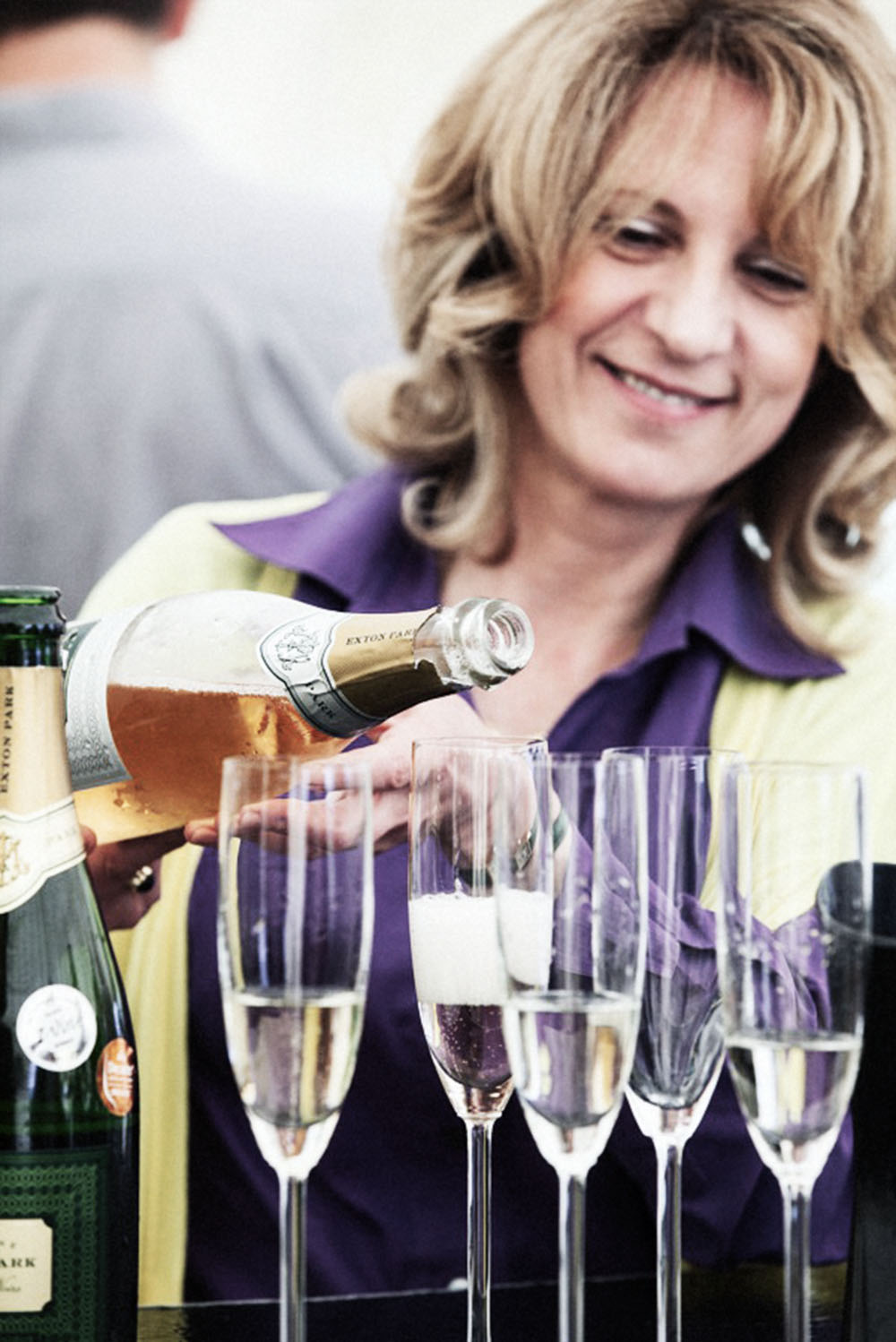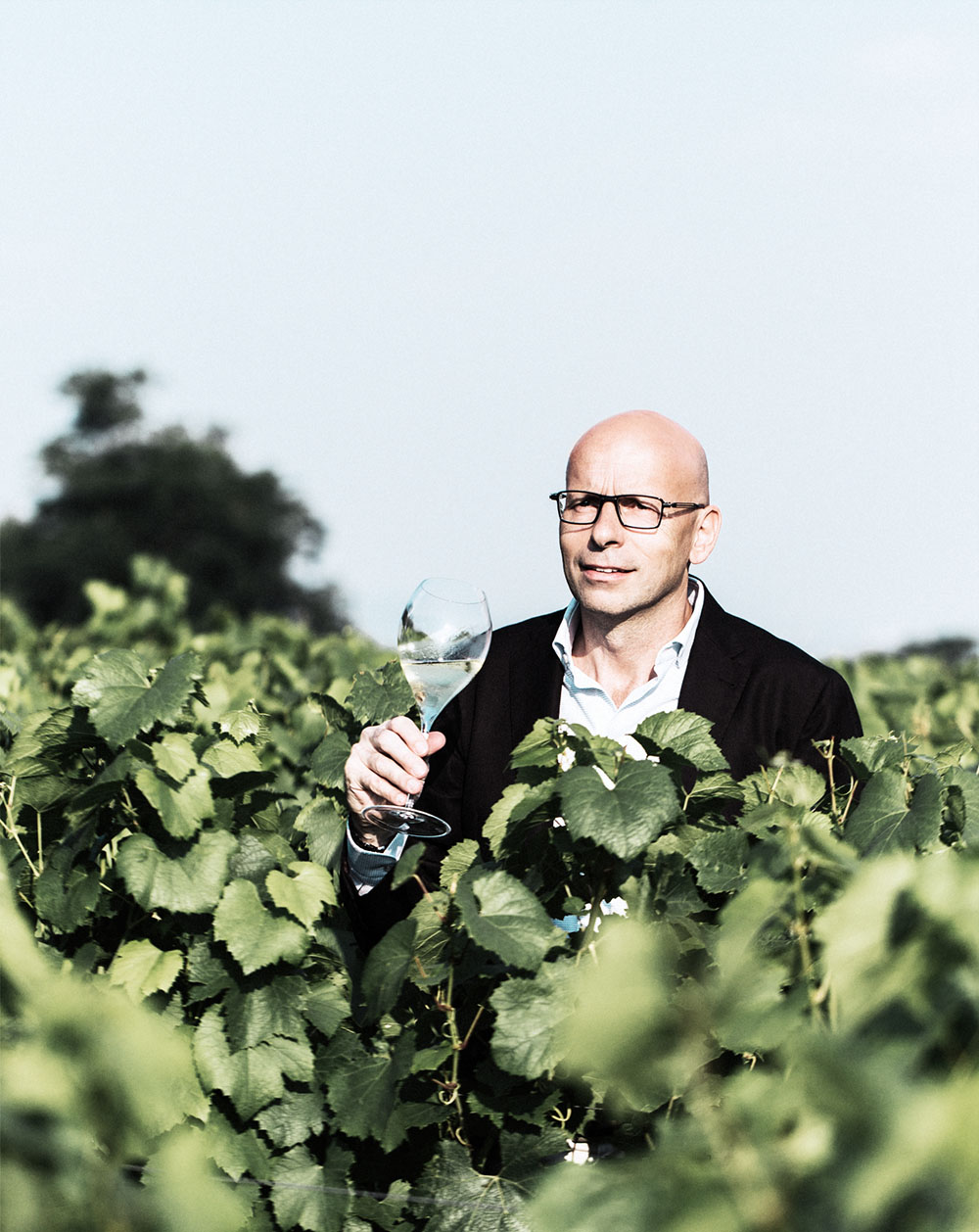It’s true that Champagne sets the gold standard for sparkling wines, but it’s no longer necessary to fill your flute with gold, and pay that price, to enjoy a spectacular sparkler. Many other regions around the world are making very high quality traditional method sparkling wines, including Canada. Canucks do share the 49th parallel with the Champenois, after all.
The painstaking traditional method of production is mandated by law not only for Champagne, of course, but also for numerous other bubbles, including Spanish Cava, French Crémant, Italian Franciacorta and South African Method Cap Classique. Naturally, the grapes, soils and climate affect the final wine dramatically, and regional appellation laws vary with respect to grapes, lees time and yields. But it is widely accepted that for the most complex sparkling wines, secondary fermentation occurs in the bottle, wine is aged on the lees and clarified slowly by hand or by gyropalette with remuage (riddling). Once the spent yeast is into the neck of the bottle, the plug is disgorged, the wine is topped up with dosage, and the bottle is recorked to rest for several months, or years, prior to release.
Here are other regions around the world beyond Champagne that are making serious, high-quality, traditional method sparkling wine, as well as recommended wines to seek out.

New Zealand
The Kiwis’ cool climate, plentiful sunshine and diversity of soils and climates has spurned a recent surge in sparkling wines, specifically (and fittingly for this premium wine region), traditional method sparkling. Already making waves for their balanced, fruit-laden and mineral Chardonnays, it’s a natural that this grape take the lead in these structural wines, often joined by Kiwi-friendly Pinot Noir. Sauvignon Blanc plays a role as well, as one can imagine, but the fruity and thiol-fuelled grape fares less well with autolytic flavours. Though New Zealand fizz only represents 0.8 percent of exports currently, expect this to grow rapidly. Look to Gisborne, on the North Island, for fruity, generous styles, and Marlborough, in the south, where the diurnal shift enhances the crispness and finesse desired.
No. 1 Family Estate Blanc de Blancs NV, Marlborough, New Zealand ($36)
Spiced ginger dough, sea salt and frizzed lemon pith open this blanc de blancs, from 100 percent Chardonnay. The tight green apple and lemon character has been deepened and matured with 2 years on the lees, but still retains the marine freshness. Elegant and well integrated.
Quartz Reef Methode Traditionnelle NV, Central Otago, New Zealand ($35)
Light golden in hue, this biodynamic Pinot Noir/Chardonnay from Bendigo, Central Otago, spent 24 months on the lees, and it is integrated beautifully. That savoury lees is joined by red apple, delicate florals and cherry, all grounded by a subtle brioche nuttiness and lifted by crisp mineral and pink grapefruit vibrancy. Fresh and complete, with a lingering pithiness on the very lengthy finish.
England
English sparkling wine has emerged as a darling of the global fizz scene, with cool (but some years too fringe) climates and a swath of desirable chalk (that continues down to Champagne), prompting plantings and investment. Even Champagne is taking notice, with Taittinger recently investing deeply in English vineyard land. Many of the 500 commercial vineyards in the country are producing sparkling wine, and it now accounts for almost 70 percent of the entire production. Shearing, racy acidity is hallmark, coupled with grippy, chalky texture and appealingly low alcohol. The industry’s youth means that there isn’t much reserve wine in the blends, though as cellars deepen and mature so will the nature of these pristine wines. Hampshire and Sussex carry the majority of these sparkling holdings, with the Chardonnay and Pinot Noir aided to a small degree by Pinot Meunier in the cuvée.
Hambledon Vineyard Classic Cuvée Rosé NV, England ($40)
Bright and juicy fine strawberry, wild raspberry and light toast fill this linear rosé fizz from Hambledon’s estate vineyards, finishing with a chalky, salty riff and lingering white cherry notes. South East-facing chalk slopes in Windmill Down provide a pithy and grippy texture to this crisp, bright fizz from one of England’s oldest commercial vineyards (1952) and certainly one of the most exciting quality sparkling producers. Ninety-five percent from the 2014 harvest is splashed with 5 percent barrel-aged reserve wines. The Chardonnay was fermented in French oak and, after 6 months, was blended with the Pinot Noir in stainless steel for 14 months on the lees. Precise and structured, with a gentle cushion of cherries to counter the striking acidity, this is drinking beautifully now but will continue to deepen over the next few years.
Exton Park Brut Reserve NV, England ($40)
From the chalky soils of Hampshire’s South Downs, this is a 60/40 blend of Pinot noir and Chardonnay based on the 2013 vintage with reserve wines from 2011 and 2012. Seventeen months on the lees, the 7 g/l RS is perfectly situated to offset the shearing lemon acidity. Laced with chalky grip, this is a bright, direct and focused fizz that is near the very top of the pack of English sparkling wines.
Germany
Germans drink more sparkling wine than anyone on the planet (nearly five bottles of bubbles for every adult and child annually). And they make a lot of sparkling wine too, though only 2 to 3 percent of the Sekt produced is traditional method. As with most things German, knowing how to read your labels pays off. Traditionnelle Flaschengärung indicates traditional method production, and if Winzersekt is noted, the wines were produced from the growers’ own grapes, parallel to grower Champagne. Obviously Riesling rules here, from crisp, taut styles to riper, fruitier examples. However, many producers are working with Chardonnay, Spätburgunder (Pinot Noir) and Weißburgunder (Pinot Blanc) in serious fizz.
Raumland Riesling Prestige Brut 2008, Rheinhessen, Germany ($35)
Savoury throughout, with large-flake sea salt, stones, biscuit and yellow apple shaped with the razor cut of Riesling on limestone. The pervading freshness can be attributed to malolactic fermentation stopping on its own this year. Linear and streaming, with citrus pith on the brisk, lingering finish. A beaut; this organic wine has aged very well. Disgorged in March 2016.
Reichsrat Von Buhl Rosé Brut 2014, Pfalz, Germany ($40)
Deeper, bright pink hue, this 100 percent Spätburgunder is from the 2014 vintage. Skin contact for a few hours, and then direct press into stainless. Beauty, freshness and purity. Brisk, fresh and bright, with fine wild strawberry, subtle cherry, white grapefruit pith acidity and subtle raspberry blossoms on the finish. Pristine.
Italy
No country has as many fizz appellations as Italy, with its optional “maybe spumante” clauses taking up for than 100 of the country’s DOCs. However it wasn’t until 1995 that the metodo classico (traditional method) style appellation was recognized, and the DOCG classification was applied exclusively to the sparkling wines of Lombardy’s Franciacorta. Here, the triangle-shaped region is moderated by the effects of Lake Iseo, and protected by the shadows of the Dolomites, affording a much milder winter than most sub-alpine regions, and warmer summers than Champagne, yielding fruitier, riper wines. Chardonnay and/or Pinot Nero are mandated, with the use of Pinot Bianco (up to 50 percent) allowed, and wines must spend a minimum of 18 months on the lees.
Ferghettina Franciacorta Extra Brut 2006 DOCG, Lombardy, Italy ($52)
A serious, structured bubble, with 80/20 Chardonnay/Pinot Noir spending 69 months on the lees. Ample brioche and lees here, laced with ripe pear, red apple, almonds and orange blossom. The full, concentrated palate is sheared with pithy acidity, a well-played foil to the richness in the mouth. If you’re looking for a full, rich, well-built, aged (and age-worthy up to another 10 years) traditional method sparkling, here you go.
Ca’ del Bosco Franciacorta Cuvée Prestige NV, Lombardy, Italy ($42)
Rich, doughy and concentrated, this blend of Chardonnay, Pinot Nero and Pinot Bianco commands attention with its ample heady, autolytic character. Twenty percent vintage wine and 28 months on the lees amps up the volume and density, while a persistent bead of acidity works overtime to lift the heft. Baked apple, brioche, nougat and lemon are supported with creamy mousse and fine spice through the lingering finish. Confident presence and rich from top to bottom, this would pair with mains like roasted partridge with élan.

South Africa
Methode Cap Classique, or MCC, is a term created in 1992 by The Cap Classique Producers Association (CCPA), a group of like-minded producers who banded to promote quality traditional method fizz. There are now more than 70 members across most of South Africa, with the limestone-laced soils of Robertson recognized as a standout region for production. Any grapes are allowed, though Chardonnay is viewed as the best, and wines must spend nine months on the lees and a total of 12 months in bottle. To ensure quality, whole-bunch pressing is mandated for the base wines, and these are tasted annually by the association’s members to promote quality for the final wine. According to Pieter Ferriera, sparkling winemaker guru and head of Graham Beck (which recently transitioned to entirely fizz production), the goal is to up the minimum lees time to 15 months in the future.
Graham Back Brut Blanc de Blancs 2010, WO Robertson, South Africa ($30)
Winemaker Pieter Ferreira is one of the leading proponents of the MCC (Methode Cape Classique) association, and a globally recognized fizz specialist. This fresh, focused Chardonnay was whole-bunch pressed, 50 percent fermented in oak barrels (7 percent new barrels) before 36 months on the lees. Disgorged in 2014, this yields a fine balance between subtle tangerine pith and gently creamy, biscuit-laced lees. You can feel the wake of the region’s warmth on the finish, though this crisp and saline fizz rings with freshness. Robertson has a high proportion of limestone soils and this Chardonnay is predominantly sited on them.
Huis Van Chevallerie Filia Chenin Blanc Brut Nature Kap Klassiek 2013, WO Swartland, South Africa ($30)
From gnarly, old, bush-vine Chenin from Paardeberg, planted at 330m. This is zero dosage, but with 4 g/l of residual sugar naturally left from the wild ferment, it is labelled Brut. Fourteen months on the lees provides this skeletal and racy fizz with a little cushion on its bones — just enough to prop up the green apple, salty, wet stone and lemon pith raciness of the Chenin.
